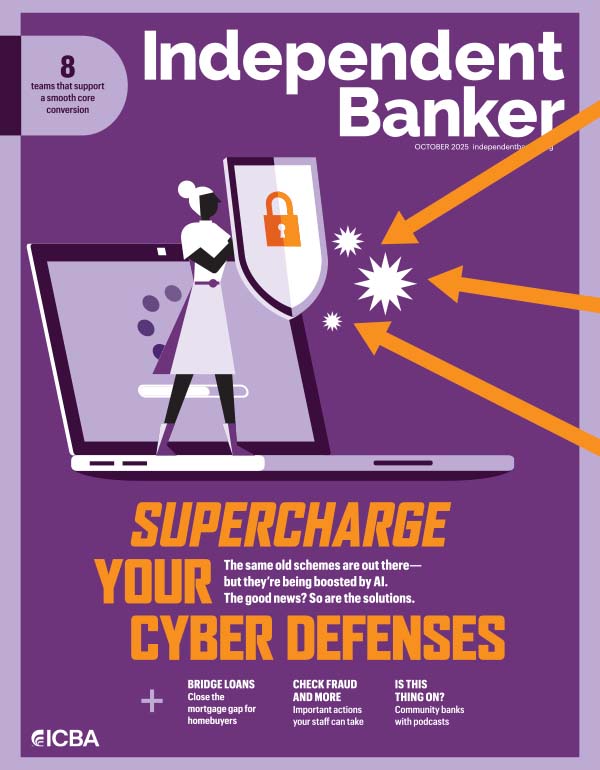With thousands of financial institutions, the U.S. banking system certainly offers consumers the power of choice. Of course, it can be easier to implement technological capabilities in countries with only a handful of banks. In Europe and Asia, for instance, digital wallet use cases have expanded to transactions like crypto transfers and payment “super apps” like WeChat.
In the U.S., community banks must grapple with digital wallet capture and ensure consumers have a seamless experience using their bank cards with apps like Apple Wallet and Google Pay—all while operating within a competitive market.
Lean into consumer behavior
The use of digital wallets in the U.S. is on the rise, and they’re becoming an essential consideration for community banks. A report by Worldpay shows that in the United States, digital wallets accounted for 37% of all e-commerce transactions and 15% of all POS transactions in 2023. Those numbers are expected to increase by 2027 to 52% and 31%, respectively.
These days, people almost always have their phones with them. This behavior will continue to drive digital wallet use, since paying with a phone that’s already in their hand is easier than searching for a physical wallet. So, as consumers rely more on digital wallets to make payments for everything from groceries to gas, community banks need to ensure that their cards hold a “top of wallet” position as customers’ first choice for transactions.

“Consumer expectations are continually evolving,” says Nick Denning, head of product and strategy at ICBA Payments. “The onus is on community banks to make [sure] that they’re not getting in the way of consumers’ natural buying and purchasing behavior.”
That means banks need to provide contactless cards and enable digital issuance so they’re not creating unnecessary friction for consumers. “It’s a lost opportunity for banks to optimize their portfolios and improve interchange income if customers are not using the bank card in their digital wallets,” says Denning.
And if consumers can’t find what they’re looking for with a bank, they’ll move it to other platforms like PayPal or Venmo, “even though consumers’ money isn’t insured there,” points out Mick Oppy, CEO of fintech Neural Payments. “Consumer protection is not necessarily a driver for consumer behavior. It comes down to convenience.”
Oppy believes more community banks need to get involved in day-to-day transactions. “If the bank makes it really easy for customers to do everyday spending, they’re going to keep putting money in their accounts because of how convenient it is,” he says. “Deposit recapture is actually about spending, not necessarily about deposits first.”
Quick Stat
52%
The percentage of all U.S. e-commerce transactions that digital wallets are expected to account for by 2027
31%
The percentage of U.S. POS transactions that digital wallets are expected to account for by 2027
Source: Worldpay
Active management needed
As community banks compete for the top priority position in digital wallets, they must examine their card programs and why customers would choose their card over another. According to Denning, “If banks aren’t engaging their accountholders and targeting them with campaigns, they’re losing a chunk of their accountholder spend, because accountholders are reacting to promotions or engagement from other competitors that might be outside of the banking system, like fintechs or other providers.”
Oppy believes that once consumers have made a choice, they aren’t likely to choose a different card within their digital wallets unless they have a compelling reason to do so. Community banks should dig into data to look at how customers spend their money and how the bank can make that more convenient or offer perks to encourage accountholders to use the bank card within their digital wallet. For example, banks could create relationships with vendors to create special offers and targeted marketing campaigns.
Oppy thinks community banks need to take some risks with their card programs. Even while banks are spending money on core conversions or digital banking platform switches to compete on digital functionality, those changes aren’t affecting customer spending behavior.
Amid technology changes, community banks could run a marketing campaign for a few months that improves card usage or recaptures more deposits.
“There’s a hesitation in rolling something out, knowing it might not be 100% successful,” Oppy says, “but at least you tried a program, attempted something and saw some adoption. Or you saw some change, positive or negative, and learned for next time.”






